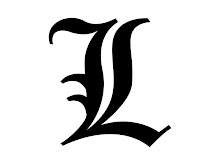I've found that the easiest way to navigate the maelstrom is by using mobile apps. Seriously. Think about it: We've all grown accustomed to mobile UIs. They're intuitive unlike their dinosaur counterparts. You simply scroll, tap or type and voila! When you look at the Netflix, Hulu, or the HBO GO app, you know exactly what to do. There's no confusion. Zero clutter. Just pure viewing bliss.
But we can do better than just apps and websites. When Google TV was announced back in 2010, I thought it was the most amazing thing to happen to TV in quite some time. In theory at least. Most of us know what we want to watch, so it's just a matter of searching for it. You might not Google things all day like me, but you know how to search for things. GTV offered a way to bypass every cable set-top box menu and just get straight to the content. Whether it's a dispute with content providers, like HBO, or drab hardware, like the Co-Star, GTV has been poorly executed from the top-down.
Perhaps that's the reasoning behind Apple's recent acquisition of Matcha.tv, a video discovery tool that simply tells you where you can watch what you're searching for. Apple does have a track record of rehashing others' services that work like crap, but there's precedent here. More and more, source-agnostic search is becoming standard in on-demand, from Xbox 360 to the Wii U to the latest TiVo, universal search is taking hold. Adding in live TV would be a nice move for Apple. But there's no set timeline as to when Apple plans to implement the service into current Apple TV software, or even how. Fingers crossed that it will come soon, and that it will be good.
As for the future of my TV watching experience? I think I've made a grave mistake. I'm watching even less content than before. One thing is for sure though, I don't see myself paying for cable beyond this MotoGP season. In fact, I may just end it now; Fox Sports 1's coverage of MotoGP is like watching a monkey fuck a football. I signed back up for cable to watch more stuff—not to ruin the stuff I already watch.
Image: Flickr user schmilblick
0 komentar:
Posting Komentar